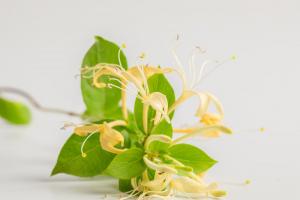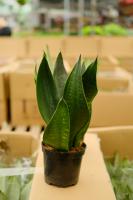Introduction
Planting an apple tree is an exciting and rewarding activity for any gardener. But the question that arises is when should apple trees be planted? Should you plant them in fall or spring? In this article, we will explore the advantages and disadvantages of planting apple trees in fall.
The Benefits of Planting Apple Trees in Fall
Fall planting offers several potential benefits over spring planting. Here are a few that you should consider:
1. Cool Weather
The cool weather during fall is an ideal time to plant apple trees. The cooler temperatures reduce the water loss and heat stress experienced by the tree and allow it to establish roots before winter sets in.
2. Lower Insect and Disease Pressure
During fall, the insect and disease pressure is lower compared to spring, making it an optimal time to plant apple trees. Since the pests are less active and the growing season is coming to an end, the tree is less likely to develop infections.
3. Soil Preparation
Fall offers ample time for soil preparation. You can test the soil, adjust the pH levels, and enrich it with compost, manure, or other organic matter. The nutrients will get a chance to break down, and the soil will be ready for planting in the spring.
4. Cost Savings
Another advantage of planting apple trees in fall is the potential for cost savings. Garden centers often offer end-of-season sales during fall, which can significantly reduce the cost of apple trees.
The Drawbacks of Planting Apple Trees in Fall
Despite the advantages, there are some drawbacks that you should consider before planting apple trees in fall. Here are a few:
1. Risk of Frost Damage
The risk of frost damage is higher during fall planting. Although apple trees are frost-resistant, newly planted trees are more susceptible to frost damage than established ones.
2. Shorter Growing Season
Since apple trees planted in fall go through winter dormancy, they have a shorter growing season than those planted in spring. This means that they may take longer to produce fruits than their spring-planted counterparts.
3. Not Suitable for All Regions
Fall planting may not be suitable for all regions, especially those that experience harsh winters or dry spells. In such regions, spring planting is more appropriate.
Conclusion
Fall planting is a feasible option for those looking to plant apple trees. The cooler temperatures, lower insect and disease pressure, and ample time for soil preparation make it an optimal time to plant apple trees. However, the risk of frost damage, shorter growing season, and unsuitable regions may pose a challenge. Thus, before planting apple trees in fall or spring, it's important to weigh the pros and cons and choose an option that works best for your region and growing conditions.

 how many times do yo...
how many times do yo... how many planted tre...
how many planted tre... how many pine trees ...
how many pine trees ... how many pecan trees...
how many pecan trees... how many plants comp...
how many plants comp... how many plants can ...
how many plants can ... how many plants and ...
how many plants and ... how many pepper plan...
how many pepper plan...
































